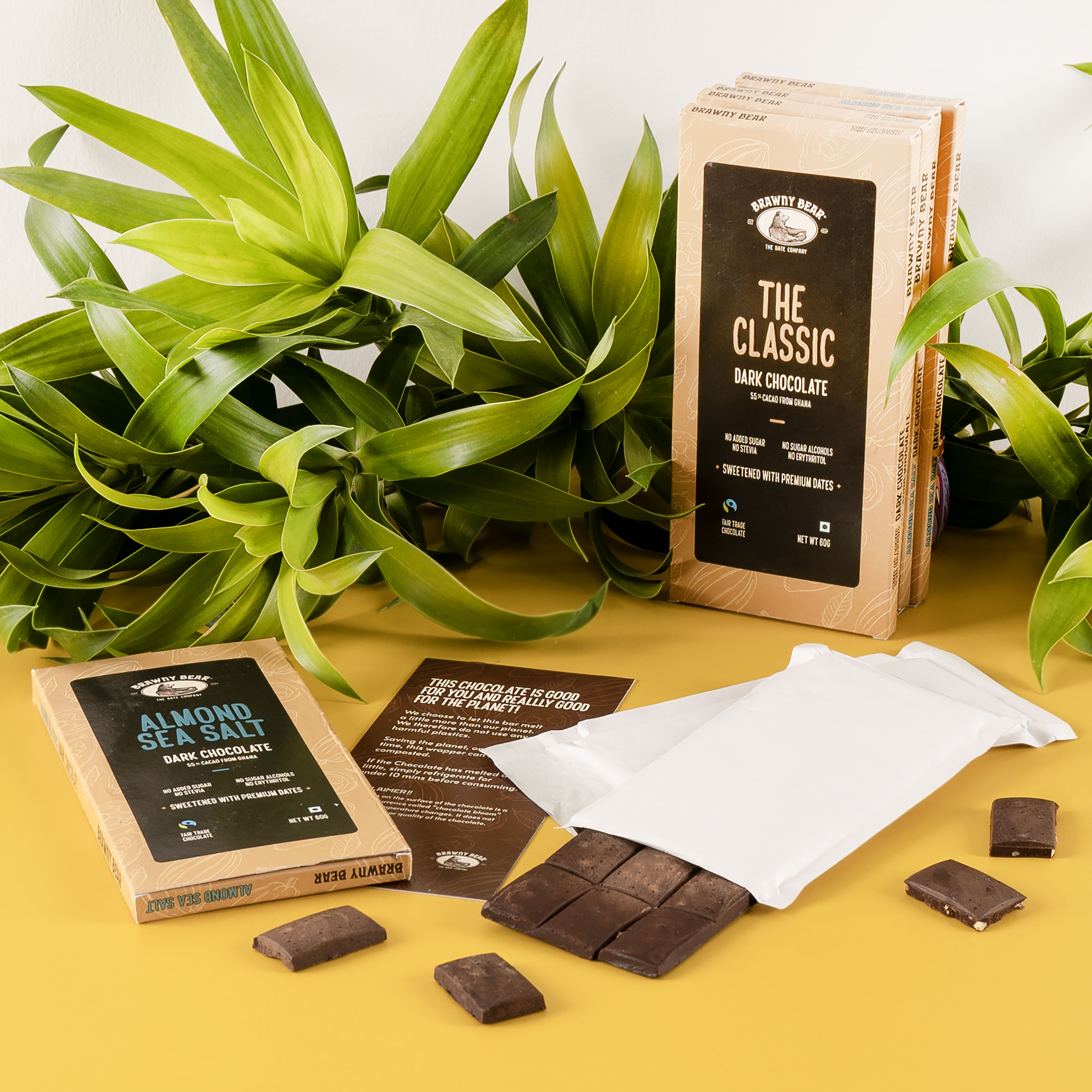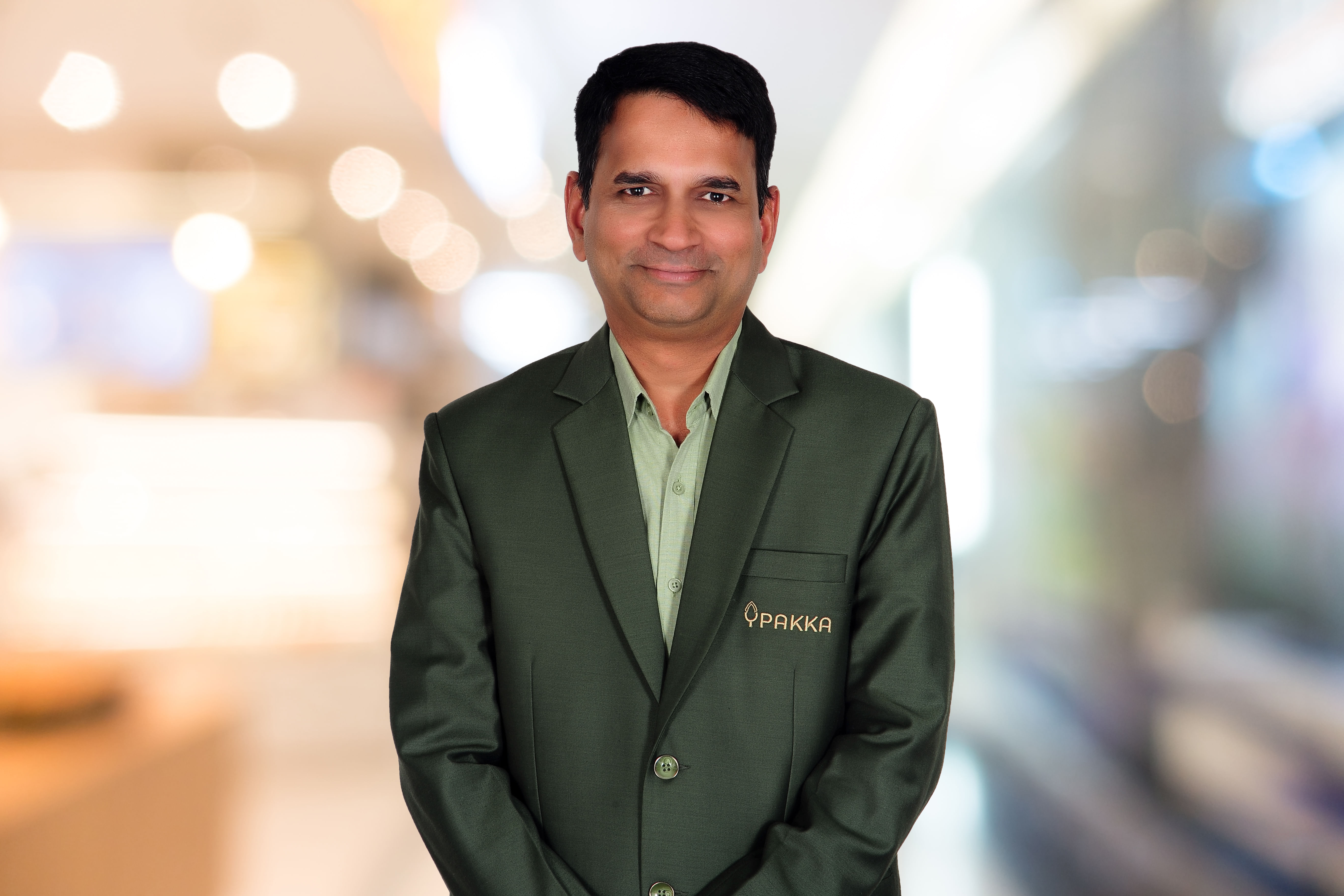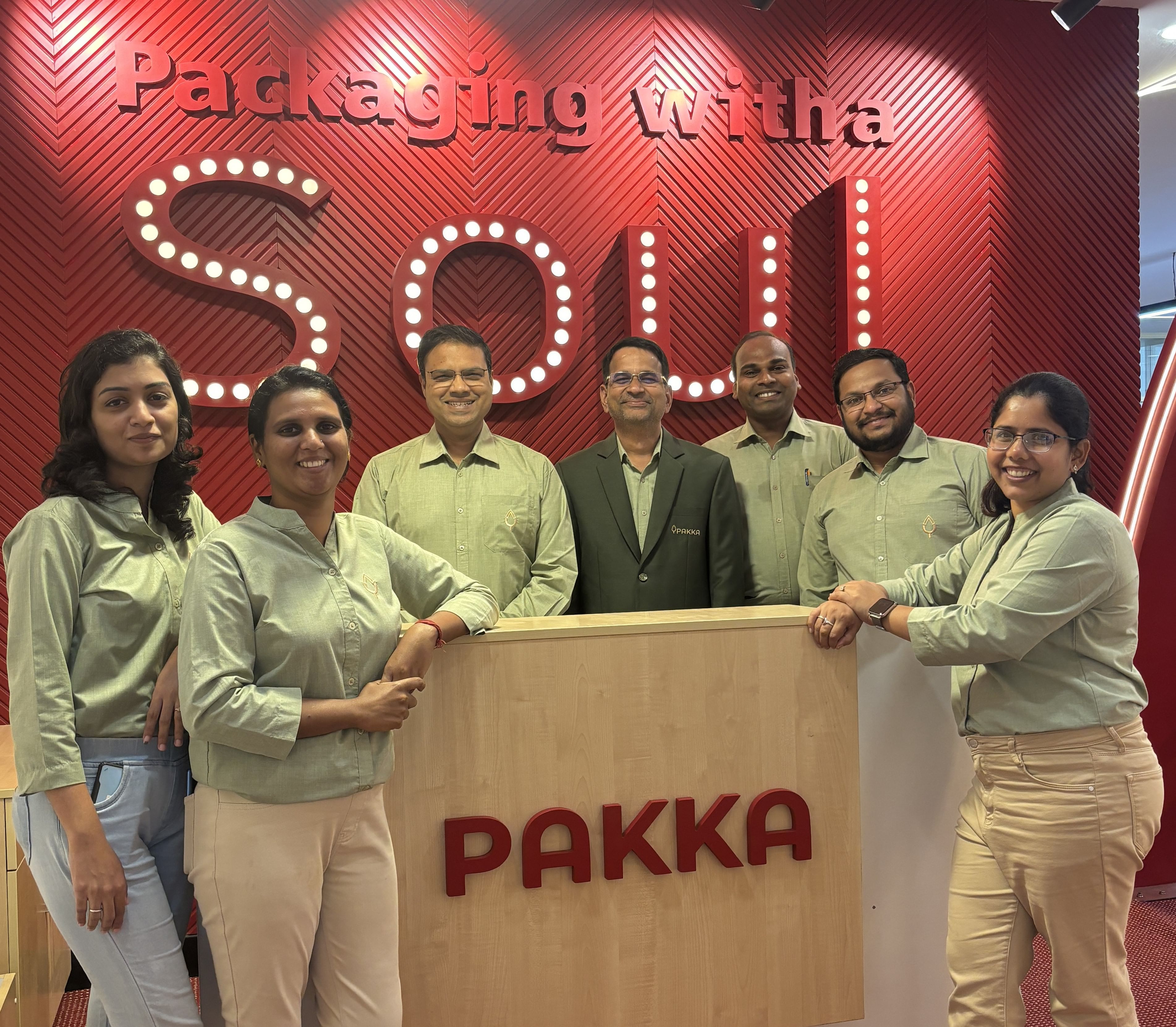Pakka makes a sustainable move with Brawny
Disha Chakraborty talks to Ramjee Subramanian, innovation head at Pakka, about the journey of Brawny Bear’s switch to compostable wrapper for its new chocolate range with a 12-month shelf-life
15 Aug 2024 | 8058 Views | By Disha Chakraborty
In a brilliant novella by Antoine de Saint-Exupéry, which was first published in 1943, The Little Prince tells us all about the importance of taking responsibility for our actions and decisions. He says, “And now here is my secret, a very simple secret; it is only with the heart that one can see rightly, what is essential is invisible to the eye.” This is the message from Ramjee Subramanian, the innovation head at Pakka, who loves the book.
On a rainy day in Mumbai, Subramanian, who joined us on a Google Meet from Bengaluru says, “When I joined Pakka in late 2022, we took it from conceptualisation to the development stage. The humble cellulose was the starting point.”
Pakka, he says, is focused on sorting out the base paper standardisation, and then to modify the base paper to get the desired packaging performance properties such as increased shelf-life. “The challenge on one hand was about material construction and on the other hand, we had to convince the customers to invest and co-develop at such novel, sustainable cost! effective product-based packaging solutions,” he adds.
The chocolate wrapper journey
Subramanian, who has worked with the paper specialists in Finland, says, “One of the challenges is, to look into the possibility of how to add biofilm stroke, a coating layer, which will enable us to view the functionality as well as the sealability compounds. We moved ahead methodically in terms of scalability, performance requirement, sealability, strength, and of course printability.”
The key to Pakka’s success was, how the Pakka team was able to advance in parameters like oxygen transfer rate (OTR), water vapour transmission rate (WVTR), moisture content and barrier properties. “We tested the shelf-life of the chocolate product, the food safety of the chocolate when wrapped in our paper, and the compostability,” he explains.
This, Subramanian says, convinced the customer’s client and helped to pitch to the brand. “The next step was to consider the scalability, machinability, and packing performance quotient of the paper which Pakka had developed,” he adds.

Pakka team was able to advance in parameters like OTR, WVTR, moisture content and barrier properties
The test and the trials
Subramanian is a veteran in the packaging space with nearly 28 years of experience, which includes 10 years at ITC and 10 years at the Helsinki University of Technology. Prior to his current role at Pakka, he was the research and development specialist at Xamk – South-Eastern Finland University of Applied Sciences. He speaks of how the process took a year to get to the shelf.
According to Subramanian, an important step was supposed to be the functional properties of material and structure creation tailored to pack specific food cuisine. He says, “If you look at the structures, plastics have their own characteristics, and cellulose will have its own challenges replacing that type of material.”
How to scale up
Presently, Pakka is expanding its current facility in Ayodhya by adding a fourth paper machine and boosting the capacity by 100mt tons/day. Pakka hopes to develop niche specialty sustainable paper grades which will delight and fulfil the green customer in India and around the globe.
But as Subramanian says, “There is a lot of work going on in the new lab in Bengaluru by our innovation team. Our aim is to make strides in developing compostable packaging solutions for food. He says, “The development is all-round and we’re looking to multiply the impact that we’re going to be able to make in the next two years.”
Subramanian adds, “Coating holds the key. We are looking at a process with minimal unit operations, coating consistency and integrity. Further, we aim to create and develop recyclable and compostable biomaterials. We are evaluating a multitude of coating technologies, and with forward integration, we are keen to boost the volumes.”
Initially, Pakka will outsource in order to leverage its capabilities. This will help deliver and scale our concepts. At the moment, Pakka is investing in Jagriti in Ayodhya, a project which is aimed at creating a flexible packaging structure. He says, “And for this, we are co-developing, scaling, and evaluating technologies with our partners. Given the volumes of this project, it will enable us to outsource and integrate further.”
The sustainable and regenerative structures are product specific and will enable Pakka to scale through confidential collaborations and partnerships. As Subramanian had said during his presentation at the Respack conference in Mumbai, “The industry must have a realistic plan to limit plastic. This means establishing recycling facilities around the country, sculpting a plastic credit scheme and above all, awarding innovators like Pakka.”
Team Pakka: Working on solutions for needle-like fibres creating an issue on paper-making machines
Commercialisation
As per Subramanian, commercialising requires two things, one is from a value creation perspective. He says, “All the structures created by us have the patenting rights.” Secondly, the company is working with collaborators and has the appropriate agreements between the two.
He says usually the needle-like fibres create an issue while working on a paper-making machine, and while printing on it. How does the Pakka team overcome that? Subramanian replies, “If you look at printability, the cellulosic substances are good at printability. In terms of performance, the cellulose will not be directly in contact, but it will give us the modified compostable structure. Hence, no needle-like structures will come in contact with the product.”
Possible to extend the shelf life? Subramanian says, “If you look at shelf-life — the conventional structures versus the new structures, conventional structures would have one year shelf life, and that! s a long issue.” The question that has to be put forward is, what are the ideal requirements? And is the packaging over-engineered? That! s the second aspect, according to him.
“We look at material characteristics, create and evaluate biomaterial-based structures, study their conversion, performance, product safety, circularity, and end of life, and evaluate their suitability for specific product packaging solutions,” he adds. Subramanian tells us shelf life can be put in two different ways.
“One is the question of what is actually required. The second one is that what we have developed has no disturbance with reference to the product.” “A pack of chocolate will have a shelf life of a maximum of one year.
We tested our paper for a year, we put it on the shelf for a year and got the certificates, only then did we start establishing business cycles and supply chains,” he concludes.
Pakka is primarily into chocolate confectioneries. Beyond chocolates, he mentions, there is nitrogen filling, the cold chain aspect, and small sachet. That is a significantly big area. “For all those, the structures have to be determined, and the concept has to be stabilised. As we are doing with the chocolates, we are simultaneously working on other concepts and developments, which are yet to be established,” he adds.
Finite model
Subramanian talks about the finite model. He gives an example of a chips packet. The production is carried out on a huge scale, but as it reaches the market, it becomes cheaper. After the consumption, the packet goes to the dustbin, and ends up in a landfill. He says, “The finite model is a make and dispose model, after which the whereabouts of the product is unknown. There is no circularity or end of life attached to this model."
Conclusion
An excess of plastic presents a challenge to companies trying to reduce their reliance on single-use plastics in the face of stricter regulation and the government pledges to reduce plastic waste pollution. Pakka’s sustainability mantra as it makes a move into compostable wrappers for both plastic and paper, and with a heavy emphasis on re-use of packaging is one way to go.
As The Little Prince says, “Grown-ups love figures... When you tell them you’ve made a new friend they never ask you any questions about essential matters. They never say to you “What does his voice sound like? What games does he love best? Does he collect butterflies? “ Instead they demand ‘How old is he? How much does he weigh? How much money does his father make?’ Only from these figures do they think they have learned anything about him.”
Perhaps it’s time for the grown-ups in the industry to ask a different set of questions about sustainability.

Ramjee Subramanian, innovation head, at Pakka
